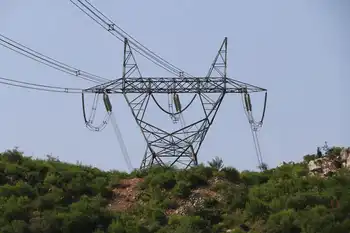Nebraska town abuzz over tourism idea: Electric chair
By Associated Press
NFPA 70e Training
Our customized live online or in‑person group training can be delivered to your staff at your location.

- Live Online
- 6 hours Instructor-led
- Group Training Available
The Nebraska Supreme Court ruled last year that the state's use of the electric chair was unconstitutional because it amounts to cruel and unusual punishment. Some people in McCook — population just under 8,000 — think "Old Sparky" could be a tourist attraction and have offered to take it off the state's hands.
Fifteen men were executed in the chair, which is housed about 210 miles east of McCook at the Nebraska State Penitentiary in Lincoln.
"If it's sitting somewhere collecting dust, we have a place for it," said Duane Tappe, who said the chair could bring thousands of tourists to the town every year.
"My wife thinks it's a little — what's the word — macabre," said Tappe, who's involved in the city's Rotary Club and chamber of commerce. "But I would drive up the road to see it. I mean, I drove all the way to Cawker City, Kan., to see the (world's largest) ball of twine."
Corrections department spokeswoman Connie Nemec says there are no immediate plans to move the chair, although she wasn't ruling out the possibility. It's still in the death chamber at the penitentiary.
The electric chair became the state's sole means of execution in 1913, replacing hanging. Now, lethal injection appears poised to replace the chair, if a bill being considered by a legislative committee is approved.
Eleven men are on the state's death row. The state's last execution was in 1997.
Tappe floated the idea of bringing the chair to McCook to Sen. Mike Christensen of Imperial, whose district includes McCook. Christensen is asking the state for the chair.
"You're going to have people that think this is gross or disgusting, but fact is, it's been part of Nebraska history, and you've got to preserve history," Christensen said.
Lynne Ireland, deputy director of the Nebraska State Historical Society, agrees.
"We can't pick and choose," she said. "We can't merely do happy history just because it makes everyone feel good."
Texas' electric chair — where 361 inmates died — is on display in Huntsville at the Texas Prison Museum. And the National Museum of Crime and Punishment in Washington, D.C., displays a guillotine, gas chamber and electric chair.
What's important, Ireland said, is to ensure such "challenging materials" are displayed in a factual manner and not sensationalized.
"It really depends on the purpose of the museum and what its intention is and what its audience is," she said.
Tappe's idea is to display the chair at a yet-to-be-built museum planned to honor George Norris, a Nebraska U.S. senator from 1913 until 1943.
Norris was the primary force behind the Rural Electrification Act, which brought electric service to rural areas across the country.
Tappe said he sees the chair as "one of the uses for electricity, whether that's good or bad."











